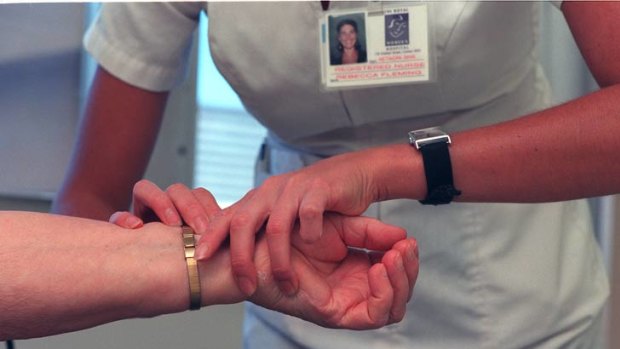By Michelle Grattan
EMBATTLED Prime Minister Julia Gillard will today add a ground-breaking hospitals deal with the states to the list of achievements in what she calls her ''year of delivery''.
The long-awaited agreement, worth an estimated $175 billion to the states in extra funding up to 2030, promises to provide millions of extra inpatient, emergency and outpatient services in public hospitals.

A $175-billion hospital deal between the federal government and the states promises extra inpatient, emergency and outpatient services in public hospitals.
Ms Gillard will be able finally to add the hospitals agreement - stitched up after years of wrangling between the Rudd and Gillard governments and the states - to the signing of the asylum seeker arrangement with Malaysia, the unveiling of the carbon price details and the Tasmanian forestry agreement.
Although official figures were not available last night, Victoria's share of the $175 billion in extra funding would probably be about $44 billion.
The agreement, which was approved in principle by federal and state leaders in February and supposed to start on July 1, has been delayed by battles with Victoria and Western Australia. These have been over the new structures for pricing services and monitoring results, and how funds will be paid.
The states have wanted to retain as much control as possible, while getting more money, but there has been a series of compromises, with both levels of government giving ground.
The extra funding is a minimum of $16.4 billion from 2014, when the new money starts, to 2019-20, after which it ramps up dramatically because Canberra will pay half of the growth costs in an area of rising spending.
In the years to 2019-20, the reforms will deliver:
■2 million more services for patients admitted to public hospitals;
■2.9 million more services in emergency departments; and
■19 million more outpatient consultations.
The agreement brings a major change in the way Australia's public hospitals are funded. The federal government will pay for half of every new dollar in hospital spending. This starts at 45 cents between 2014-15 and 2017-18 and rises to 50 cents from then on.
The arrangement is uncapped, so the Commonwealth will be an equal partner with the states in paying for the growth in hospital costs.
Under current arrangements, the Commonwealth has paid a fixed five-year amount to the states. The deal will mean that the sustained decline in the federal share of funding over the past two decades will be reversed.
But the deal is less ambitious than that sought by former Labor prime minister Kevin Rudd, who proposed a 60-40 funding share that would have involved more federal control.
The new agreement provides for greater transparency. The money will go into a single national health funding pool from which it will be paid directly to local hospital networks.
The government says this will allow hospitals to be paid from a transparent common source, ensuring taxpayers' money is spent for the intended purposes.
A new National Health Performance Authority will report publicly each quarter on the performance of all hospitals in the country, including on quality, financial viability and service levels.
The government earlier had to retreat on its promise that if elective surgery guarantees were not met, places would be found at private hospitals. But the states have signed on to an elective surgery target for patients to be treated within clinically recommended times by 2015. Tasmania and the two territories get an extra year.
The federal government had to give some ground on the four-hour target for dealing with emergency cases - from the original 95 per cent down to 90 per cent.